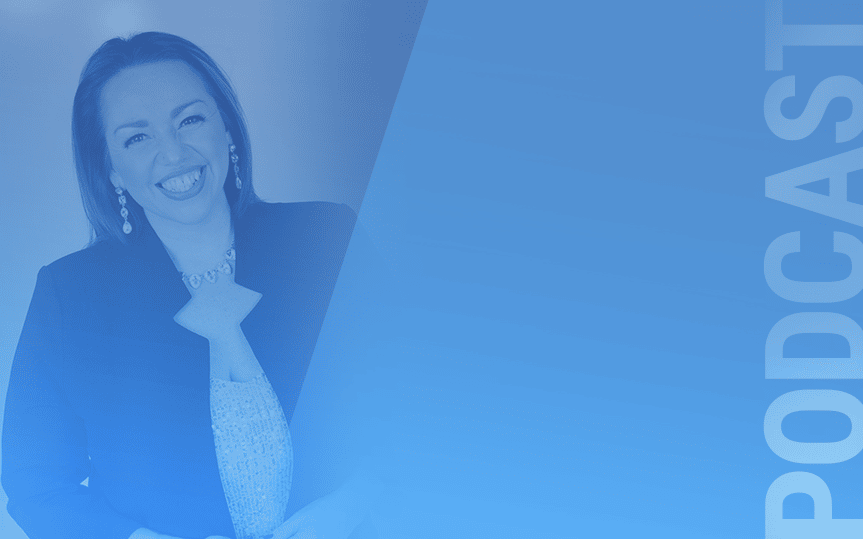How To Optimize Your Sales Booking Process

Anyone responsible for booking sales meetings is familiar with the dreaded no-show. You go through all the effort of prospecting, qualifying, and appointment setting, and then the prospect doesn’t show up. You thought they were a great fit–so what went wrong?
Our latest guest on the Predictable Revenue podcast shared her best tips to help optimize your appointment setting process, increase your show rate, and turn more sales meetings into closed deals.
Tanya MFK is the Founder of Success By Design and host of the My Designed Life Show, featured on FM radio, UI Media Network, online platforms, and BingeNetworks TV. With over 19 years of experience in global marketing, business development, and planning strategy, Tanya has worked with companies ranging from solopreneurs to Fortune 500 and million-dollar startups.
The biggest mistake in booking sales meetings
The most common mistake in appointment setting is that once a salesperson books the meeting, the process becomes sloppy. That initial ‘yes’ has lulled the sales development rep into thinking their job is done. So they send over a link or a few time options and leave it at that.
This sloppy approach creates more work for the prospect and makes it less likely they’ll show to the meeting–or even book one in the first place.
Salespeople need to recognize that appointment setting is a critical part of the outbound sales process. It deserves the same attention to detail as prospecting and closing.
The appointment setting process should be streamlined, efficient, and take place over as few emails as possible. When it becomes a drawn-out process, the prospect will quickly become frustrated. Remember that they haven’t truly said “yes” to a meeting until they show up.
Here are a few simple ways to elevate your booking process from the standard “When’s best for you?”.
A better appointment setting process
Every touch point should serve a purpose, either to move the sale forward, provide information, or build and strengthen the client relationship. Take a look at your appointment setting sequence and evaluate each email to ensure it’s making a positive impression.
Relationships are key in outbound sales. Buyers are aware of past manipulation tactics, and they want a more human sales experience. Booking a sales meeting is the first step in taking that client relationship to the next level; it’s a chance to show even deeper interest and engagement.
Outbound sales is a form of service, and the customer is trusting you to guide them toward what’s best for them. Look for ways to build that trust into your appointment setting process.
The first step to booking sales meetings
After you have that initial “yes”, the next email in your appointment setting process needs to be laid out with care. The layout and visuals of the email should be clear, bright, and easy to understand. It should be very easy to find the scheduler link (ideally a bold color or button).
There are two main options for the booking itself: either you send them a direct link to your calendar, or you suggest one specific time and ask if that works for them.
It can be tempting to offer several options to appear more accommodating, but the reality is that more times creates more work for the prospect. Offering a simple choice (ie. “Tuesday at 10:00 am”) makes it easy for them to say yes or no. If that time doesn’t work, they’re free to suggest another.
Something else to consider is what time works best for you. If you know you have the most energy in the mornings, for example, guide your prospects toward morning meetings.

The power of automation
It goes without saying that you should use a booking platform for all appointment setting. This eliminates the possibility of you forgetting to send a follow-up reminder or any other automated emails in your appointment setting sequence.
No matter what your process looks like, always include a reminder before the call. You can elevate these simple emails by reminding the prospect of the reason for the call. Instead of a generic “I’m excited to connect”, think about what the prospect stands to gain.
The prospect isn’t looking forward to the demo–they’re looking forward to the solution it will provide. If nothing else, sales meetings provide clarity. Try a reminder statement like, “Looking forward to finding out how to solve X.” This provides an incentive for them to show up to the call.
Questionnaires for sales meetings
Ideally, you should ask discovery questions before the call, either through your booking platform or a separate email. This may seem like it creates additional work for the prospect, so be sure to remind them of the purpose: “We want to be on the call ready for solutions, not discovery.”
These questions will vary depending on your product or service, but ask anything you need to gain clarity before the call, as well as a deeper understanding of what will make it a powerful conversation for the prospect. Remind the prospect that you’re asking them these questions in advance so that you can use your time together on the call more effectively.
Follow-up before the meeting
The appointment setting process doesn’t end once the prospect is on your calendar. There should be some follow-up communication the next day, either a preparation questionnaire or the first reminder.
If you have a longer booking window, you’ll need more follow-up but you also have a greater opportunity to build trust in that time period. Try to stay top of mind and keep the prospect engaged (without becoming annoying).
Some sales development reps like to send personalized videos to each prospect, thanking them for booking the meeting and reminding them of the call details. If you choose to do this, just remember to include all the important details in the email itself as well as the video. People respond differently to different types of content and not everyone will watch the video.
Interested in adding video to your process? Our outbound sales coaching and consulting services can help you elevate your sequences with video prospecting, stronger messaging, social selling, and more. Click here to book a free discovery call!
Reminders before the call
You may be the type of person to never forget a call, but don’t assume your prospects are the same. Inevitably, some prospects will delete your email, lose the call link, or forget about it entirely.
It’s always better to ere on the side of caution and send reminders. Even if someone is extremely organized, they won’t be upset by receiving a reminder of your meeting.
Each reminder email should include the link to the meeting, so they can join from whichever email ends up near the top of their inbox. Tanya recommends a 24-hour reminder and then another 30 minutes before the meeting. If they completely forgot about the call, 30 minutes is usually enough time for them to find somewhere quiet.
Lastly, don’t forget to include a reminder in the event of a no-show. Schedule an email to send automatically if the prospect is running more than 5-10 minutes late.
Preparing for sales meetings
To perform well at sales meetings, you need to be at your best–not running on caffeine and no sleep.
Schedule your calls for whenever you have the most energy, and take the time to prepare both mentally and physically. Think about what you need to operate at your best, then create those conditions through a small pre-call routine.
Always add a buffer between calls so you have a chance to prepare and aren’t rushing through your notes. The prospect will be able to tell if you’re distracted. Remember that sales is about serving, and you’ll be able to listen better if you’ve taken the time to prepare properly.
After the call
The appointment setting process isn’t over yet! After the call, make sure you follow up with an immediate thank you and clear next steps. Let technology and automation take of this for you.
Once the process is finished and the deal is closed or handed off, don’t forget to evaluate yourself. Take some time to consider what went well and what you can improve on next time.
Booking sales meetings is an important part of the sales process
We spend so much time perfecting our outbound sales sequences, but few salespeople give appointment setting the attention it deserves. Booking the meeting is part of the process in its own right, and an important stage in building client relationships.
Using these tips, you’ll be able to create an appointment setting process that impresses prospects, reduces no-shows, and closes more deals.
If you want to connect with Tanya to learn more about optimizing your appointment setting process, visit TanyaMFK.com or connect with her on LinkedIn.
NO TIME TO READ?
Listen On:
In this guide, we’re sharing everything you need to know about not only hiring great SDRs but also how to train them for success and retain your best talent long-term. Steal our exact interview process, use our proven job description template, and learn how to motivate your reps beyond monetary compensation.



